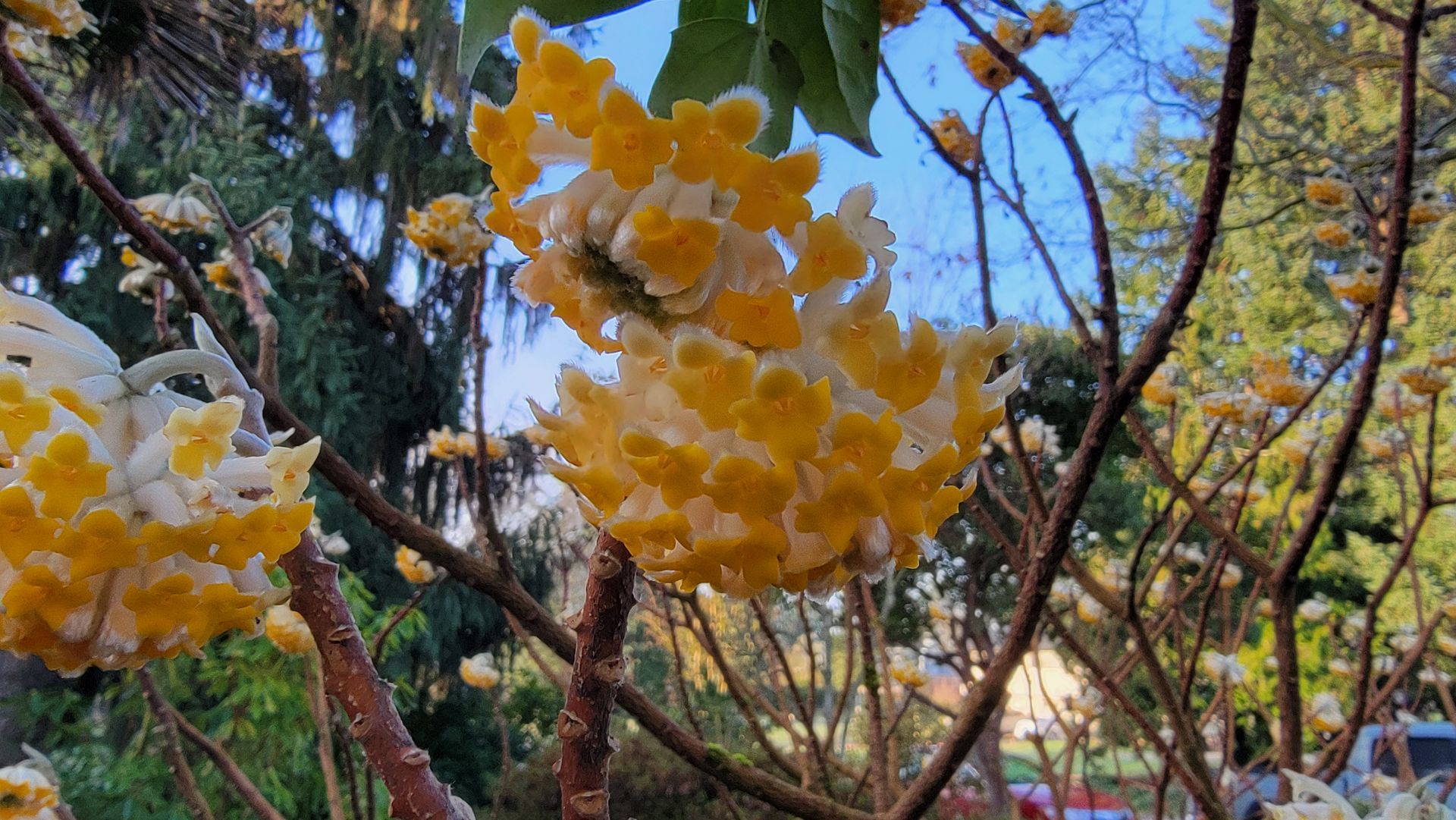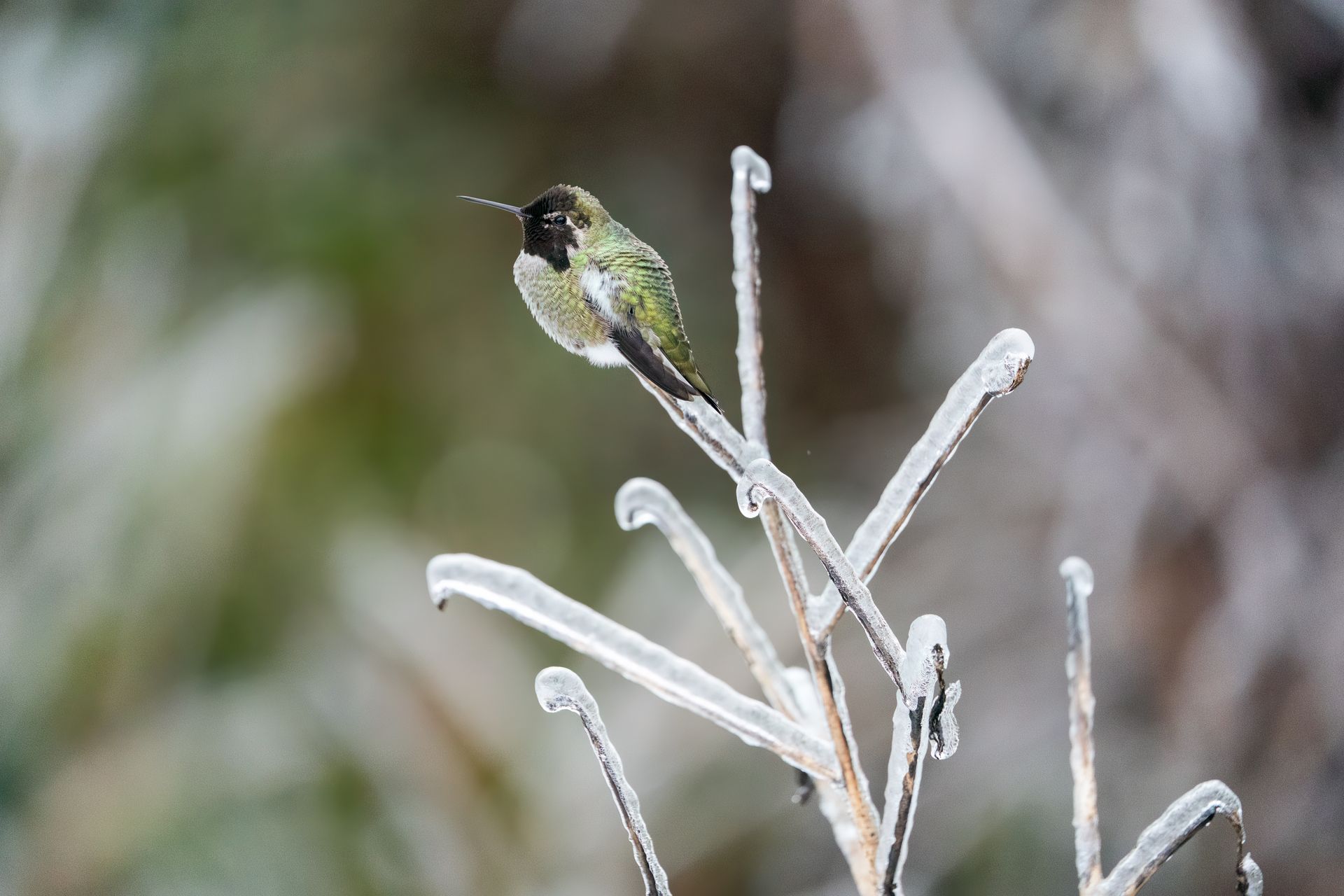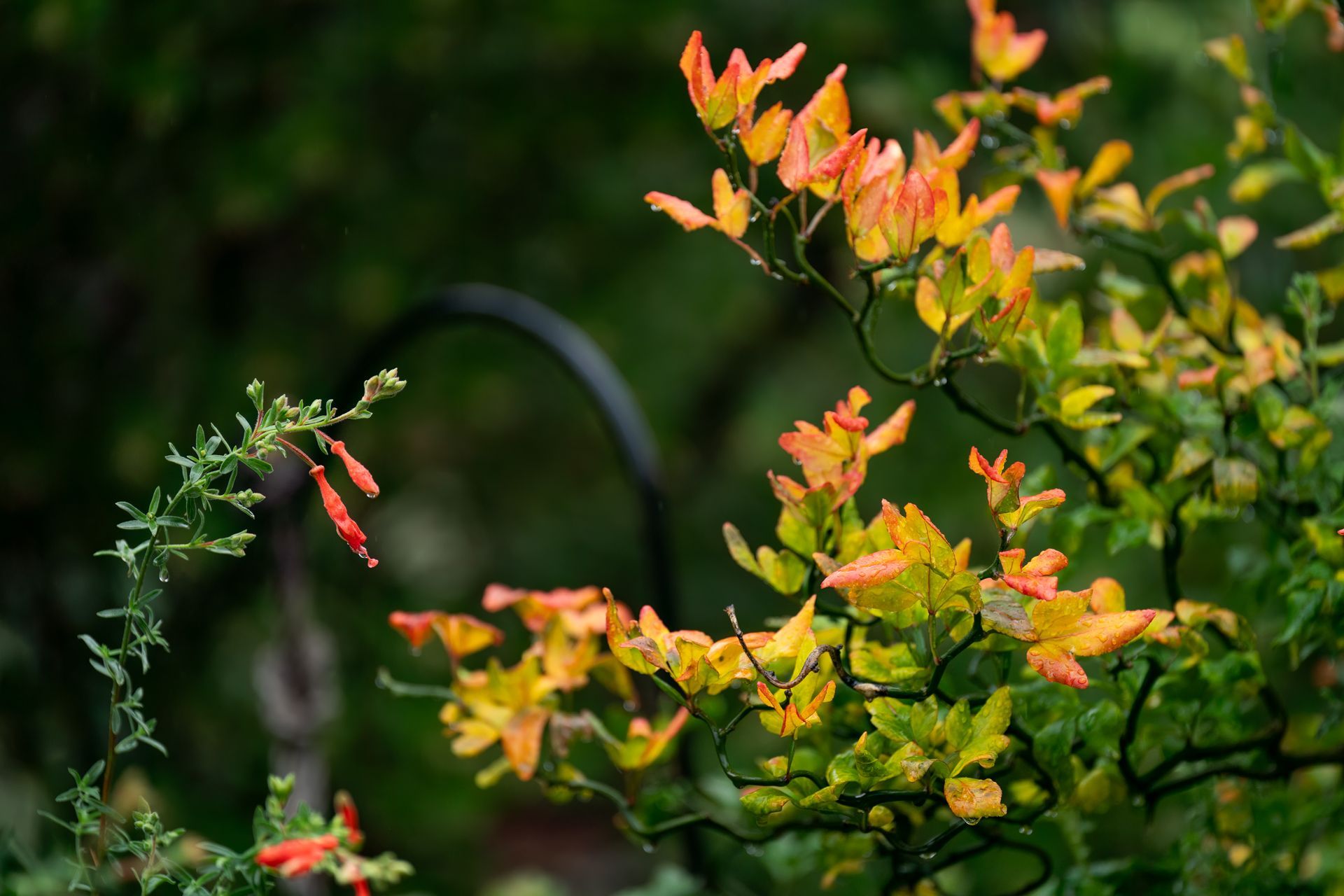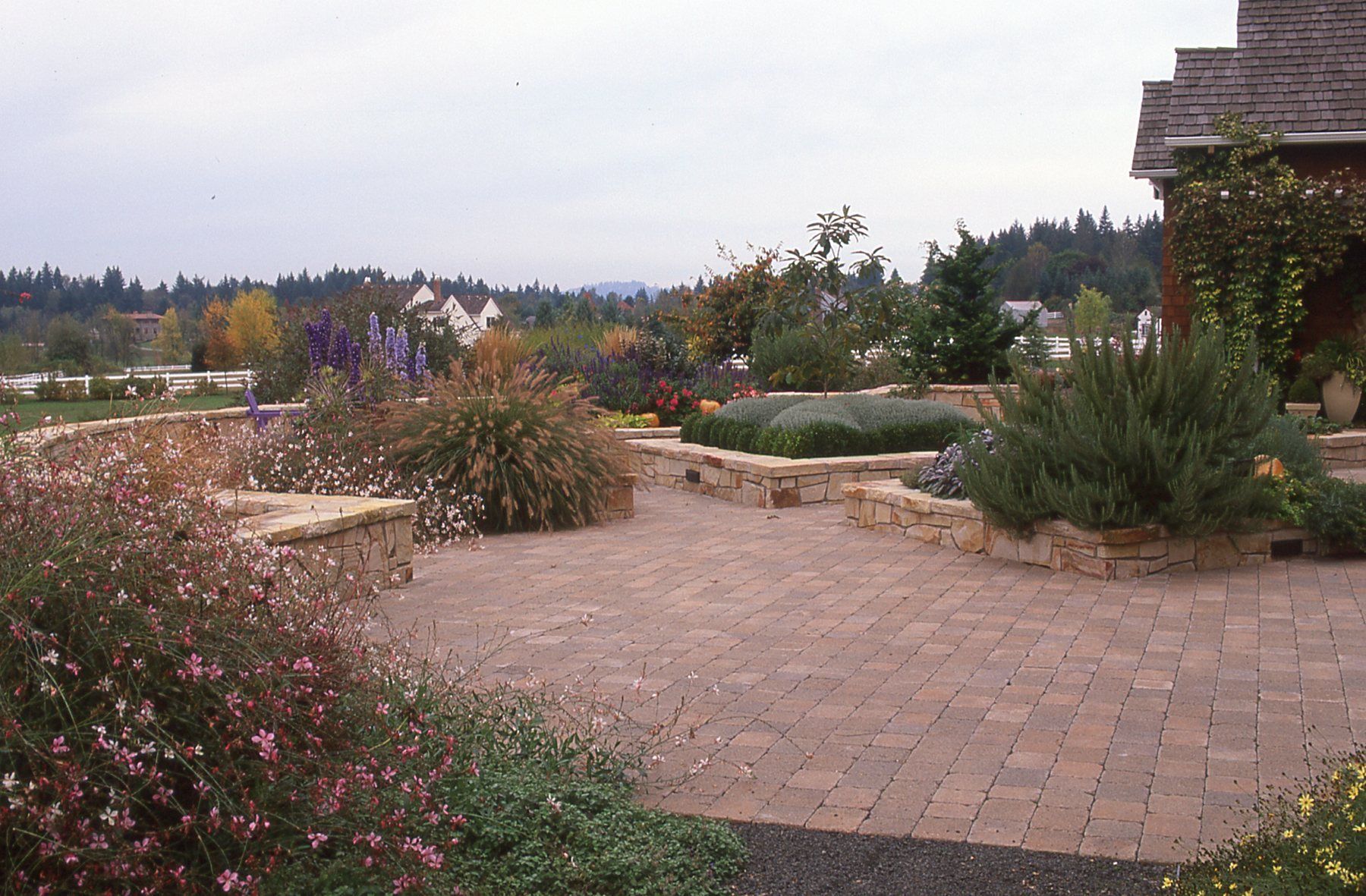Get in touch
Winterbloom, Inc.
7360 SW Bonita Road Unit A
Tigard, OR 97224
(503) 598-0219
winterbloom@winterbloominc.com


Winterbloomer

By Dale Hickey
•
29 Feb, 2024
In early February, my partner and I traveled to Puerto Vallarta for a week of relaxing and exploring. In no scenario should one visit Puerto Vallarta without paying a visit to Vallarta Botanical Garden. The garden is just a 30-minute drive from downtown PV. So we decided on a day and looked up the bus route to visit. This will be my 4th visit, but my last visit was about six years ago, and I am excited to see what's new. After a scenic and economical 30-minute bus ride, costing us merely 50 pesos, we arrived at our lush destination. The entrance to the Vallarta Botanical Garden greeted us with its enchanting entryway, a prelude to the botanical wonders that awaited. As we paid the entrance fee and proceeded, the main road leading into the heart of the gardens beckoned us to explore further. Each step took us deeper into the garden, where a symphony of birds accompanied us. The path to the garden is lined with an array of plants, from the dramatic silhouettes of the black elephant ear plants- Colocasia, with their large leaves absorbing every ray of sunshine, to the fiery colors of bromeliads, igniting the green canvas with reds, yellows, and oranges.

By Phil Thornburg
•
28 Feb, 2024
After the spots of cold weather we had this winter since the turn of the year, I hope that March lessens this winter’s cold grip on us. Remember: if you see damage to your broadleaf evergreens, do NOT cut them back now, wait until they begin to bud out in the spring! You may find that they do need to be cut to the ground, but they may simply need to grow new foliage along the stems and on the tips! The beginning of Spring is about 20 days away, so I am hopeful that we have no more disastrous freezes! Here are some tips and tricks for the month of March: · This is what I think of as the best time to purchase perennial plants at my local nursery. Currently, many of the perennials are in small, 4” containers and are ready to grow. Instead of waiting for those same plants to grow at the nursery, it’s better to purchase them now and let them grow in my landscape, rather than wait until they are larger before purchasing and ending up needing to pay more! This logic also goes for shrubs and trees. Right now, is the time to get the best value for your purchase. If you wait till it is warm and sunny, and the plants are blooming in their pots, the prices will increase, and you will miss the early bird choices and possibilities! So, go now to your favorite local nursery! Cornell Farms, Gardner’s choice, Xera, Cistus, and Bosky Dell are some that I check out regularly! · It is important, if you have not already done so, to quickly prune off any of last year’s ugly brown foliage left on your perennial plants. It is good to do that now before the new sprouts begin to pop out of the ground! I am still working on it here! · I am continuing to weed to prevent any of them from going to seed! I always pull out any weeds which are getting close to going to seed first. Seriously, if you weed now, before they go to seed and make their babies, your summer weeding will be so much easier! (And, if you are going to use a pre-emergent weed control, now is a good time - just please be careful when using this sort of thing!!) · I continue to bait for slugs! · March is the last good month for transplanting. Try to do it soon, before the plants begin to sprout. If a plant is sprouting a lot, it might be best to leave it alone and wait for next fall to move it. · I wait to prune my spring-flowering shrubs until the blossoms fade, and then I only prune them if they really need it. · I trim or shear winter-blooming heathers when the bloom period is finished, that is usually later in March. This keeps them nice and tight and full. · Now is the time to cut off all my Western Sword Fern’s fronds to clean them up and get them ready to unfurl all their new fronds. I focus mainly on the ferns that I can see along a path or from a window. Obviously, if you own a woodsy section, you will not want to trim all your ferns in the woods! No one does it out in the forest, this action is for the fern to look good. It does not affect their health! · I fertilize rhododendrons, camellias, and azaleas with compost or (only if necessary) I use an acid-type fertilizer (an indicator is that the leaves are yellow). · I spread mulch over the garden and landscape areas which didn’t get mulched well enough so that there is bare ground showing. Bare ground is an invitation for weeds! · Lawn-mowing begins sometime in March, so I set my blade at the lowest setting that I am comfortable with: ¾”-1” for bent grass lawns; set blade 1 1/2” to 2 ½” for fine fescue and ryegrasses - I set it as low as I can without permanently damaging the lawn. It will look very shorn after I do this, and it might take me three tries to get it cut down to the level that I want. The grass will also be wet and green, so if you do that, try to avoid clogging up or killing your lawn mower! I also do not leave the clumps on the grass this month as I know that it will create brown spots. I throw the clumps into the beds or into the composter. · This is the time for the first 2024 application of lawn fertilizer (after the first mowing). My preference is an organic fertilizer (non-petrochemical; suggested 16-5-5). · I Fertilize my cane berries with manure/compost (if a natural fertilizer, I suggest 10-10-10). I Prune out the dead wood on my Raspberries, Blueberries and Gooseberries to keep them from getting too big, then I spread wood shavings, and as needed, manure/compost.

By Phil Thornburg
•
29 Jan, 2024
What a cold and icy January we have all experienced! We lost an entire six working days to frozen ground. The first half of February can always bring another blast; however, going from my past experiences, I have only had two winters in our 40+ years where we have had severe weather after. February 15th is a big day; reaching it always gives me hope because, in years past, we have often had a bit of sunshine and a taste of Spring weather around that date. It gets everyone in the mood, and we start getting calls on the office phone, wanting to get work done. The weather causes people to panic, saying, oh gosh, we really need to get that drainage work done, that rock wall completed, the yard redesigned, etc., because Spring is right around the corner, and we want to be outside and enjoy it! It is time to begin baiting for slugs. Place the bait near things that they love to munch on. Beer in a pan works for some folks. I have also taken objects like wood or pottery and set them in areas slugs enjoy, and they will use this as a resting place. I flip it over, now and then, and pick them off to eliminate them. The worst are the little squishy grey ones imported from Europe. They are tiny but powerful because they choose to chew through lettuce and other succulent garden items, and they are hard to find. Weed! Now is the time when weeds are small, weak, and helpless. I take one section of my yard per weekend and work around the yard by the end of March. It saves me hours of work later in the warm weather when I am in the mood to do other things! This is a great time to plant fruit trees and deciduous shrubs from containers (or try bare-rooted, less expensive plants) and transplant. I Plant perennials and herbs outdoors, such as chives, lovage, mint, rosemary, sage, and thyme (remember that mint and oregano are invasive, so plant accordingly). I Prune fruit trees as needed. I Prune and train grapes. I Prune my roses. This is also a great time to plant new roses. Bare-root roses are available; however, we believe that Heirloom Roses in St. Paul is the premier place to purchase self-rooted roses that are not grafted. The advantage here is if we have a really cold winter and the top dies back, the roots will come back true to the variety, and I will not get a wild rose coming up from the roots because that is what they graft most roses onto! I like to Prune and gather branches of quince, forsythia, and flowering cherries and bring them inside to force early blooms. They make substantial, bountiful bouquets! I Prune summer-flowering plants, such as butterfly bush, cotoneaster, clematis, and hydrangea. I do not prune spring flowering shrubs, such as azaleas and Rhodies; or I will end up cutting off the bloom buds. I Prune back Fuchsias and other perennials which have not been pruned back to about four inches. This year has been cold enough so one might wonder whether the Fuchsias have really died to the ground or been killed. So, I have learned to just handle the bare stick look and wait to see just how far up the little green buds come out on the stems and trim them down to that mark. It has been so cold that quite possibly this Spring they all might just come up from the roots instead, so I will need to be very careful and look for their little green shoots coming up from the ground around the brown stems! I spread compost mulch two inches thick every two–three years. Composted mulch is best, but dark bark mulch is fine. It is easiest to do this in winter after things are trimmed and cleaned up. It makes everything look great! It smothers weed seeds and of course helps to hold the moisture in the ground in the dry season, and in the rainy season it prevents erosion. I also place my tree leaves and light trimmings in my beds. I find that this cuts down on the need for very much mulch most years. For adventuresome gardeners: It is that time when one can make a cold frame or hotbed to start early vegetables or flowers. Of course, doing this in the garage with a UV light is another option. Plant seed flats for crops in the Cole family, such as cabbage (as in Cole slaw), Broccoli and Brussel sprouts for future planting outdoors, using your cold frame, hot bed or garage starting beds. Prepare soil for future planting of the grow pots and flats of seedlings that you are starting. Apply first of four dormant sprays of copper/sulfur sprays mixed with dormant oil spray on apple trees to prevent apple scab and kill pest larvae. This is a nice non-petroleum-based spray. I like to choose that time well because then I can use the exact same mix of dormant sprays for other fruit and deciduous trees and shrubs, especially for certain roses that normally are attacked by disease and insects.

By Phil Thornburg
•
27 Dec, 2023
Wow, one more year has passed! It is now 2024. January and February are the months of the year when I am poised to shut off my outdoor faucets on the nights that will go below 30! I still need to turn off my irrigation system, but I hesitate as the system recharges my waterfall/pond and there are often dry periods in the winter when it needs to be on. Here are some tips and tricks for January: It continues to be a great time to transplant or plant anything hardy. Of course, I would only do this when the temperature is above freezing! However, that is fine because I am not interested in transplanting or planting into frozen rock-hard ground! The plants want moist and receptive soil, and I need it, too, for my shovel and arms! I can choose to plant Pea seeds this month! YES!! All the main types of peas can be planted now. However, I must see that the ground is ready for planting them. There are sweet peas (the ones grown only for cut flowers and fragrance) or (eating peas) which I can choose to plant. I have yet to prepare a spot in my veggie garden where the ground will not be used for something else. I know from experience that if I procrastinate and wait for warm weather to plant the peas, their insect and fungal enemies will be ready to jump on them, so if I plant them now, or at least in February, their enemies will still be asleep! All peas like well-drained and workable soil and can easily grow from seeds. They all like to climb, so I always put up some net or trellis alongside my planting row! Here are the edible peas which I plant: Shelled peas - These peas are shelled, and the shells are discarded. Snap peas - This pea pod is full, thick, and crisp with peas inside. The whole thing is sweet, and one can eat pod and all, raw and fresh. We usually use this one as a snack with dips or in salads. Occasionally, we cook them. Snow peas - This is the pea pod typically used in Asian stir-fry dishes. It is more of a thin, rubbery pod, which is picked early & young from the vine before it fills out with the peas inside. It is still a good time to scatter most wildflower seeds, such as California Poppy and Clarkia. It is still too early for me to start most other seeds for spring vegetable or annual flower plants, that means in the garden or a cold frame for use as transplants. It is essential to water many of my landscape plants underneath my wide roof eaves, which are protected from our rain, about once a month. I monitor them until the irrigation is turned on. Outside, cats can also begin using these dry places as litter boxes, and then they can become smelly, and the urine can burn the leaves of the plants! Watering the area dilutes the urine and washes it away. Moss appearing in my lawn now usually means there is too much shade. It can also mean low fertility or soil compaction, resulting in a thin stand of grass. Now is the time of the year for me to decide what I will do. My options are twofold: either get rid of some of the shade or shrink some of the lawn so I have less lawn trying to grow in the shade. Shade is the enemy of grass and, at the same time, encourages moss. Moss can quickly out-compete any lawn if it is a half-shade situation. However, moss killer is easily applied. I only use Iron or ferrous sulfate (as the active ingredient), so it is not poisonous to humans or animals. I monitor my trees, and if they are getting too big and shading too much of my lawn, the first option is to remove the shaded part of the lawn. Another alternative is to remove some of the branches /or remove the whole tree if I want lawn in that location! For indoor winter color, I gather branches of budding quince, forsythia, or flowering cherries and bring them inside. I first mash the bottom of the stems before placing them into a sizeable water-filled vase. The warmth of our home will force the buds on the sides of the branches to bloom early for beautiful bouquets. I Monitor my houseplants weekly for correct watering, fertilizing, and guarding against insect infestations! I dust leaves. I use a low-level fertilizer like “Oxygen Plus,” I am cautious not to overwater this time of the year! This is also when I look at all my trees, shrubs, and perennials and plan out needed pruning projects to commence with my winter pruning!

By Phil Thornburg
•
15 Nov, 2023
From the fall of 1979 to the fall of 1982, I worked as the field and laboratory testing manager for a geotechnical company called L. R. Squier Associates. A recession happened during the early 80s, interest rates for mortgages on homes ranged from 11% to 17%, and employment was hard to come by. I was laid off from L.R. Squier in October of 1982 and began looking for work, taking a class on vocations and employment preparation. I was assessed and told that I had artistic talents, the learned skills to manage a geotechnical laboratory as well as its field assignments, and many skills in the field of horticulture but that I should work for someone else and not seek to own or start a company because they determined that I had no business understanding as well as being low in math skills and accounting. I found a job working part-time at minimum wage for Gerber Gardens in Lake Oswego. I enjoyed working with their employees, selling to clients, and learning about their various plants. I did not earn enough to support our family, so Barb began cleaning the homes of our Tigard Community Friends congregation members.
Winterbloom, Inc.
7360 SW Bonita Road Unit A
Tigard, OR 97224
(503) 598-0219
winterbloom@winterbloominc.com
Content, including images, displayed on this website is protected by copyright laws. Downloading, republication, retransmission or reproduction of content on this website is strictly prohibited. Terms of Use
| Privacy Policy
